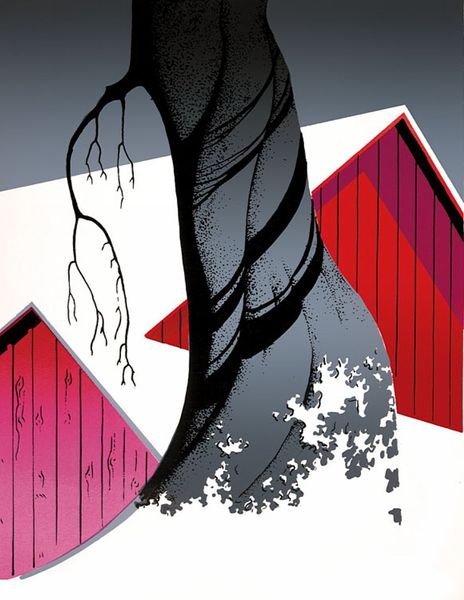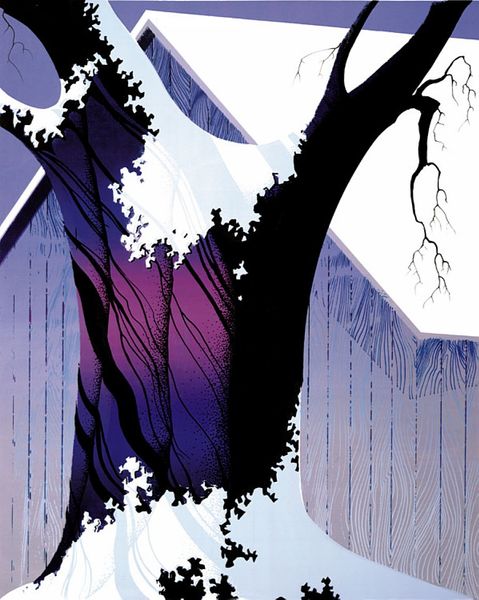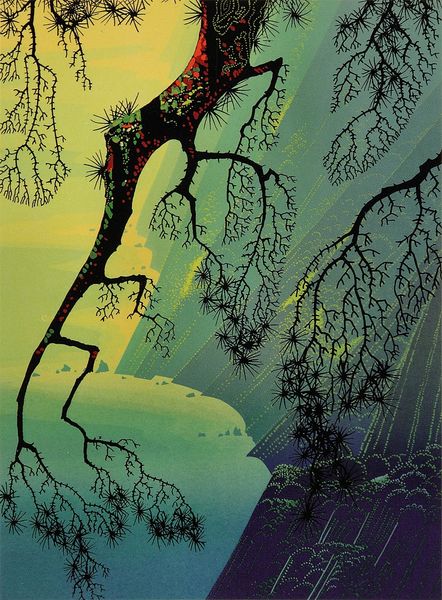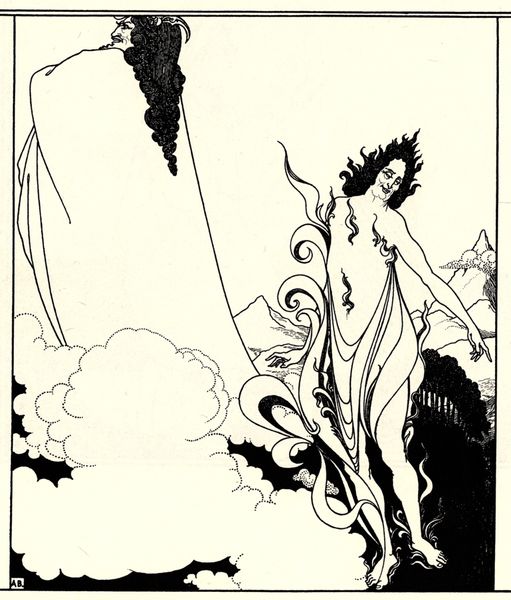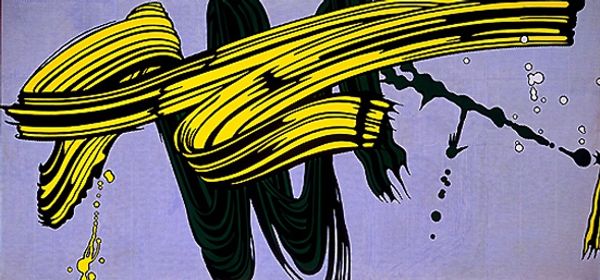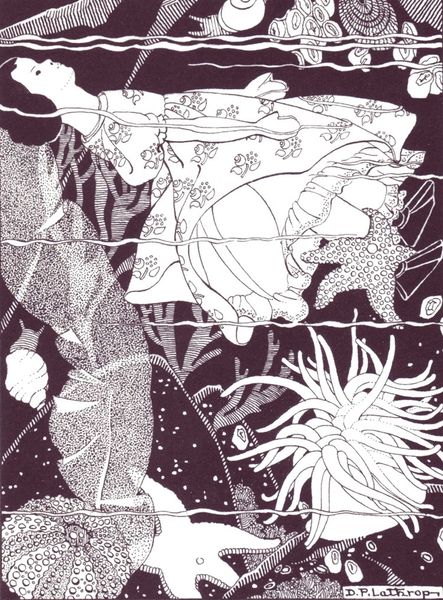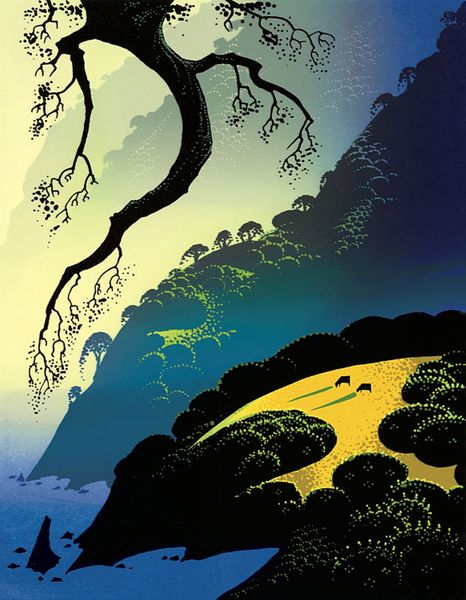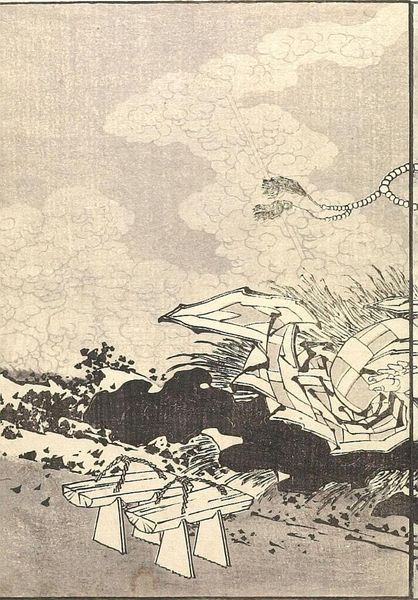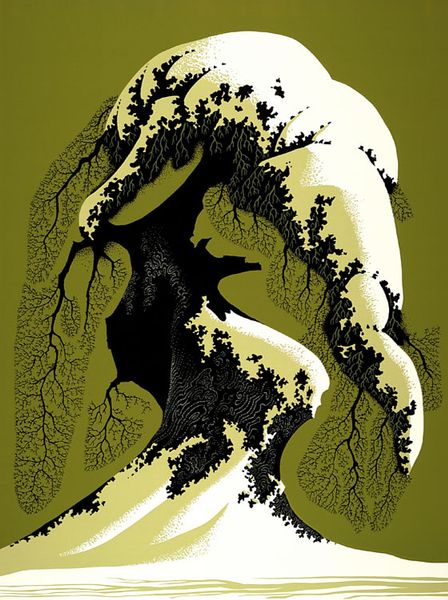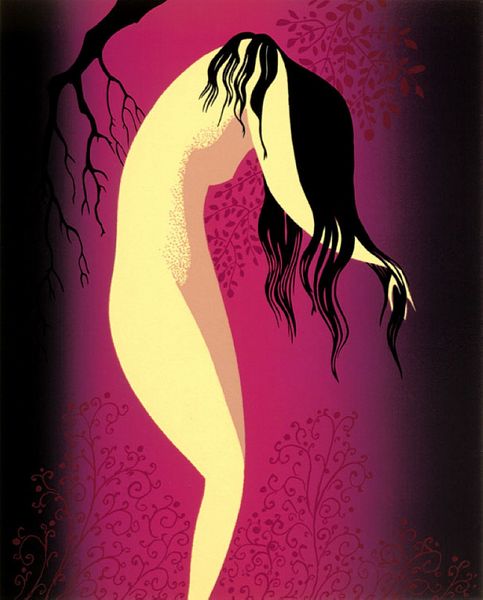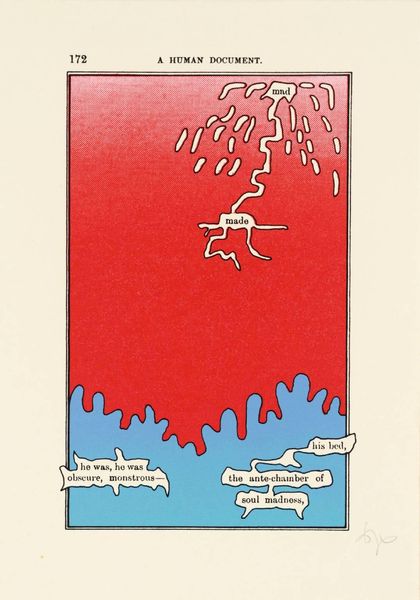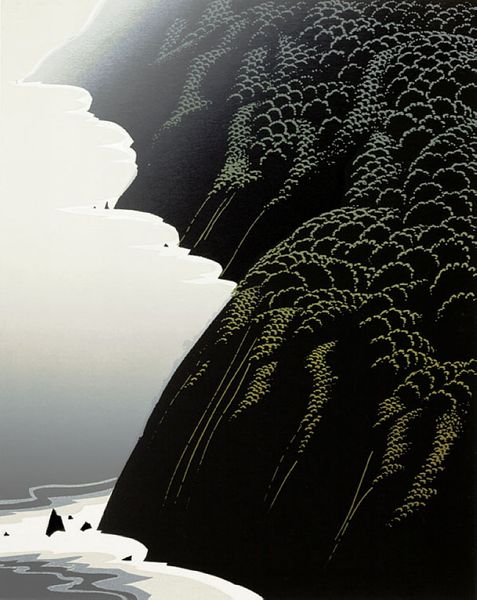
acrylic-paint
#
landscape
#
acrylic-paint
#
geometric
Copyright: Eyvind Earle,Fair Use
Editor: Here we have Eyvind Earle’s “Mauve Barn,” painted in 1985 with acrylics. I’m really struck by how geometric the entire composition is; it’s a landscape, but also feels like an exercise in abstract shapes. What do you see in this piece? Curator: I see a commentary on the myth of rural idyll, particularly in the context of Reagan-era America. The barn, traditionally a symbol of agricultural labor and self-sufficiency, is here rendered in unsettling mauve hues, almost alienating it from its pastoral roots. The sharp, geometric forms create a sense of unease, don’t you think? Editor: Definitely! It’s pretty far from your typical idyllic landscape painting. Curator: Precisely! And look at how the dark tree bisects the frame. It suggests a rupture, a break in the promised harmony of the landscape. Consider the date, 1985: What tensions related to shifting labor dynamics, economic disparity, or anxieties about the future of rural America might Earle be responding to? Editor: That makes me think about the way industrialization had changed the landscape… Earle isn’t necessarily celebrating the beauty of nature, he's responding to cultural change and the loss of simpler times. Curator: Exactly! Art allows a discourse that critiques idealized visions. How might the concept of 'nature' itself be constructed and deployed in service of particular social or political agendas? Editor: That’s really helpful. I was initially just focused on the painting’s surface. I’m now curious to know what people in 1985 felt looking at Earle’s painting! Curator: That is why thinking critically is an important aspect of appreciating art. Considering this work’s historical context encourages broader thinking and more in-depth comprehension.
Comments
No comments
Be the first to comment and join the conversation on the ultimate creative platform.
